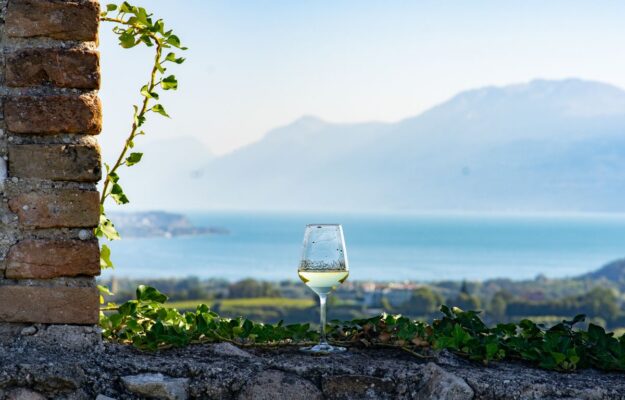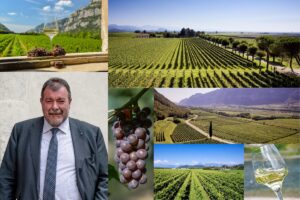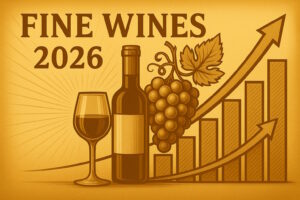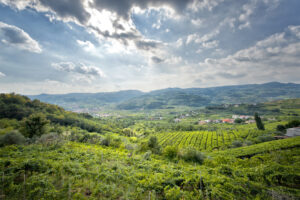Lugana, the historic Italian white wine denomination, “with a view” of the splendid scenery of Lake Garda, which in the last years has recorded significant growth in the production, sales and positioning of its bottles, is among the seven emerging wine territories of the world, according to the authoritative US magazine “Wine Enthusiast”, which puts it on the podium together with Crete, New Jersey and the Texas Hill Country (in the US), Uco Valley (in Argentina), Uruguay and Armenia. All wine regions, both recently developed and of ancient origins, are experiencing a profound transformation, thanks to expanding vineyards, rapidly developing winemaking techniques, exports and growth in tourism. And they all have in common the fact that, soon, they will become mainstream, both for their great bottles and as a destination for food and wine tourism.
In Italy, Lugana, which “Wine Enthusiast” defines as a “hidden gem”, is a clear example of how wine manages to transform tourism, making a travel destination in Italy already very famous like Lake Garda, a destination increasingly known for its wines, as we documented on WineNews. Among the great Italian white wine denominations, historic but for a long time with a more mercantile character, after having recorded a growth in the values of wine, grapes and vineyards, redistributed along the entire supply chain and capable of triggering investments by companies, Lugana is continuing its journey making itself noticed in the markets and the judgments of global critics, thanks to quality and longevity, increasingly sought after in Italian white wines, but also for its strong territorial identity. 70% of the bottles come from Italy, but the remaining 30% are sold on Lake Garda, of whose history and beauty, Lugana is increasingly the custodian and communicator, telling its uniqueness to the consumers welcomed in the cellar, who are no longer just tourists but also wine tourists. The Lugana Doc Consortium has made important investments in the last years to promote the area as a wine destination of excellence and, according to “Wine Enthusiast”, the region is certainly worth a visit, with at least 15 wineries offering accommodation to visitors.
Together with Lugana, the “Wine Enthusiast” highlights other territories in the world, starting from Crete, where the history of wine production dates back to the Minoan period, but the modern industry is actually less than 50 years old. However, over the last 25 years, Greece’s largest island has witnessed a true wine renaissance. Production has moved from large quantities of international grape varieties made by large cooperatives to small-scale fermentation by a new generation of ambitious winemakers committed to reviving native grape varieties. According to Wines of Crete, exports have more than doubled in the last 20 years, and wineries offer tasting rooms that cater to the growing number of tourists.
New Jersey’s wine scene was a latecomer, due to a pre-prohibition law that limited the number of licensed wineries. Since it was abolished in the early 1980s, local producers have made up for lost time and now the wines produced here - using a wide range of hybrid and international grapes, with plantings of Italian grape varieties such as Barbera and Nebbiolo on the increase - can stand comparison with better-known regions around the world.
In Uco Valley, in Argentina, the availability of land has led to a rapid expansion of the wine industry. The last decade, as reported by “Wine Enthusiast”, has seen the introduction of new vineyards, tasting rooms and wine resorts, but also farsighted experiments. Despite rapid growth, the region retains its wild beauty, a big plus for visitors: each vineyard is surrounded by native vegetation, including incredibly diverse varieties of birds, insects, plants and flowers.
In Uruguay the Tannat grape is what Malbec is to Argentina: however it has been slower to establish itself in terms of global recognition. This is due in part to production volume, but mostly to winemaking practices that tended to produce overly extracted wines. With a generational change among winemakers, however, Uruguayan wines represent what consumers are looking for today, and exports have quadrupled in the last 20 years. In Armenia the wine renaissance is happening rapidly, in what is called the “golden age” of Armenian wine. Since the 1920s, Soviet rule had seen the suppression of private wine companies, even though the culture of winemaking here dates back to at least 6,000 years ago. Today, ancient sites and grapes are being revived, as are amphora aging techniques and the practice of kakhani, the careful drying of bunches of grapes hanging from ropes. In conclusion, in Texas Hill Country, a region of Texas located between Austin, Fredericksburg and San Antonio, we are witnessing a series of important investments by producers who create wines suited to the climate, also harvesting earlier to maintain acidity, rather than leaving that the grapes suffer from the heat and produce overly ripe and concentrated wines. And here the focus is not only on red, but also on great whites, particularly from vines that thrive in warmer climates, including the Rhône Valley and Portuguese varieties such as Viognier, Picpoul and Alvarinho.
Copyright © 2000/2025
Contatti: info@winenews.it
Seguici anche su Twitter: @WineNewsIt
Seguici anche su Facebook: @winenewsit
Questo articolo è tratto dall'archivio di WineNews - Tutti i diritti riservati - Copyright © 2000/2025









































































































































































































